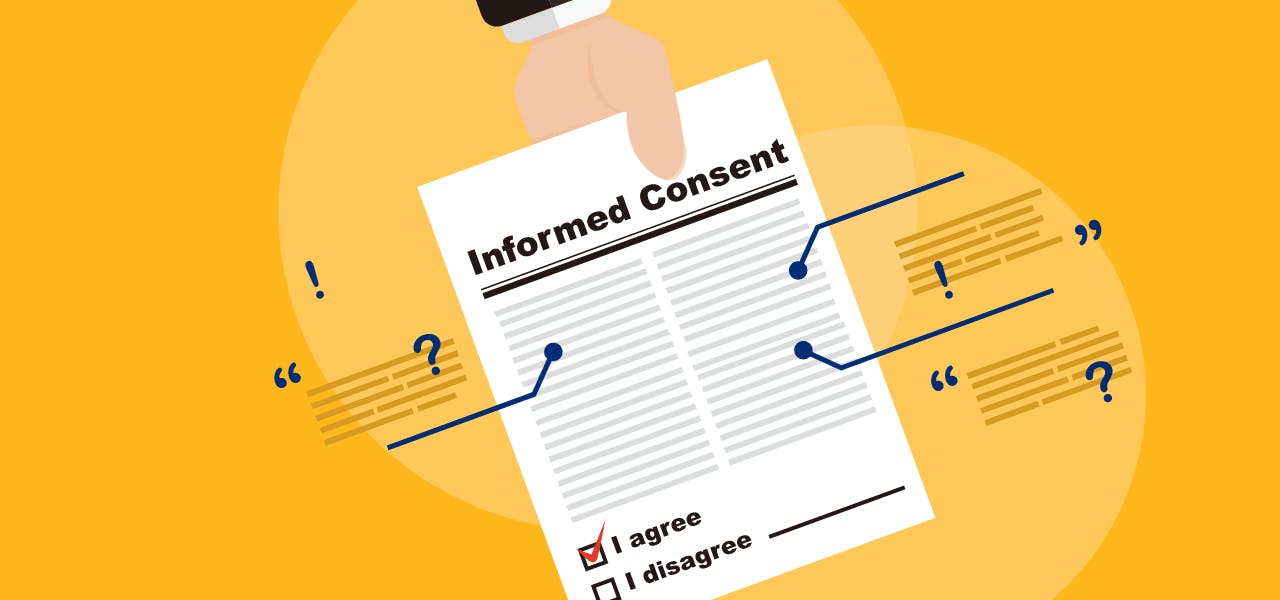Anytime a researcher works with human participants, they are required to follow comprehensive, extensive principles that guide the entire experiment. One of these expectations is that any person involved in research is given informed consent information ahead of time. If this is not completed correctly and thoroughly, the entire project could be considered invalid.
Informed consent and its importance is a significant part of science for good reasons. History has shown us that without ethical principles to follow, it’s possible for researchers to go off on their own extremist paths in the pursuit of knowledge. Governments have implemented informed consent laws and regulations to ensure that any human participating in an experiment is aware of what they are getting into and is treated ethically and with dignity.
The History of Informed Consent
When you use history as a compass to guide future decisions and actions, you can avoid a lot of mistakes. Unfortunately, history is full of human error and bad choices, including those that involve scientific investigations. Because of the reality of people who were tortured in the name of pursuing knowledge, documents such as the Nuremberg Code, the Declaration of Helsinki, and the Belmont Report were originated, thus beginning what we know today as basic informed consent.
Around the 1940s, Nazi doctors were using humans to further their scientific investigations in horrific ways. These experiments were immoral, inhumane, and unethical. Many people died and those who survived were never physically or mentally the same. Once the war was over, the Nuremberg Code was developed and signed into law in 1947. This code stated that all human participants must voluntarily agree to be part of any study, and the term “voluntary” was clarified as “able to consent both mentally and physically, not coerced to consent, and aware of all risks involved by their participation.”
Over time, it became apparent that more than just “consent” was necessary in human research, especially as biomedical technology was developing in new, innovative ways. The Declaration of Helsinki, signed into law in 1964, expanded the Code by creating twelve guiding principles that focused on how the participant could benefit from the research rather than solely pursuing knowledge for knowledge’s sake. Eventually, the Belmont Report of 1979 added the finishing touch to informed consent by requiring anyone involved in the investigations to treat human participants with respect and dignity, even those with reduced autonomy such as children and senior citizens.
Like with any law, there had to be a reason for the precedent to be set, and with informed consent, those reasons were held at the expense of a human’s life, health, and dignity.
Challenges to Research With Human Subjects
A large portion of the research performed annually is done with the intent of bettering society, and human health and circumstances in particular. The difficulty with this is that in order to research what does and doesn’t help people, human subjects must be involved. And sometimes, the treatment, service, or product will help, and other times it might make things worse.
Anyone who is involved in the participation of these studies has to be aware of the potential complications going into it. Obtaining informed consent is an expected practice, so you should already be aware of the guidelines. However, your own individual informed consent should be thoroughly written to include everything that could potentially happen in order for you as a scholar and your institution to be protected.
There are occasions in which informed consent can be waived, such as when no human rights or welfare would be violated or when a minor has parental consent, but the essential thing to remember is that the more thorough you are when obtaining consent, the more coverage you have to protect yourself and your research should anything unexpected occur later.
Obtaining informed consent can be done through multiple types of documentation, such as written signatures with a witness, audio recordings, or videotaped agreements. Through these, it must be clear that the participant was given all the information necessary to make up their minds and they volunteered willingly without coercion.
As a rule, however, it’s crucial that the researcher gathers thorough documentation that evidences their version of informing the participant as to what is involved in their research participation. This information can be written, recorded through audio, or videotaped, but it must be clear that the participant was given everything necessary to make an informed voluntary decision and that they did so willingly, which should also be recorded.
With informed consent, your research publication can be contested and retracted, so journal publishers are serious about making sure all of your work followed these principles and that all your documentation is in order before they will publish your article.
